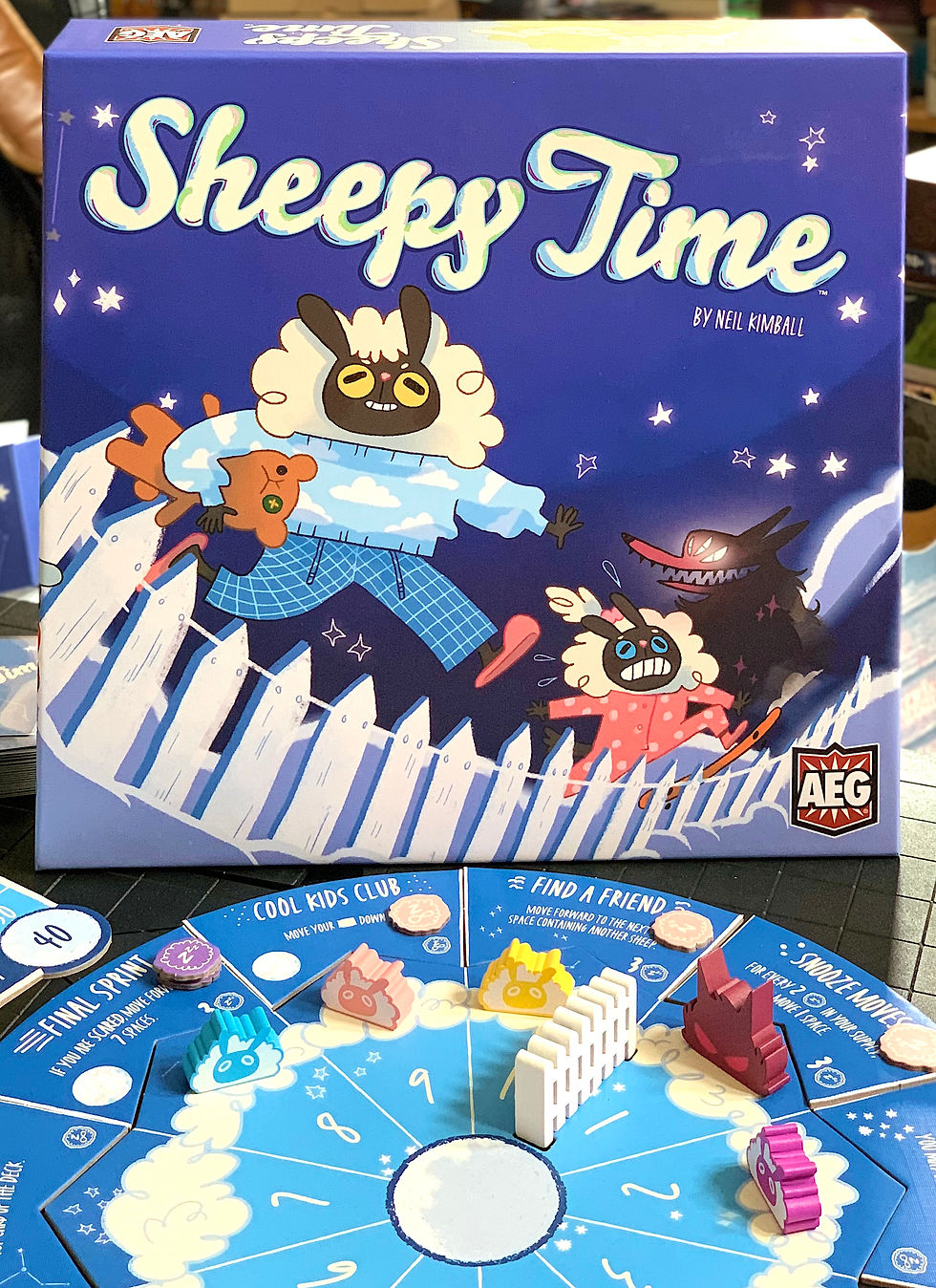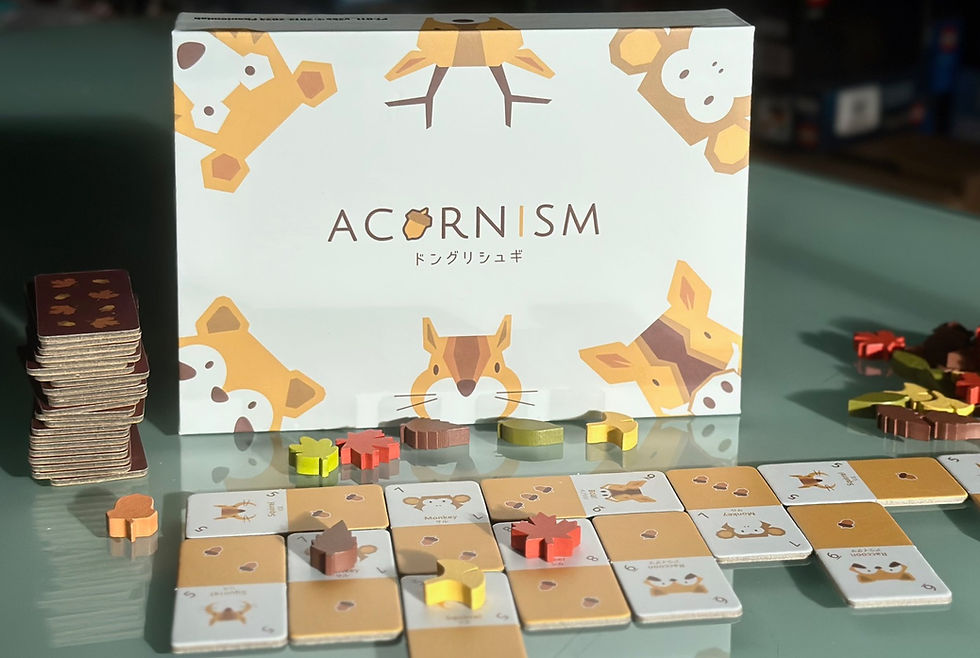Sheepy Time
- Board's Eye View

- Aug 3, 2021
- 3 min read
Zoé Plane's cute dreamy artwork might lull you into thinking that AEG's Sheepy Time is 'just' a children's game. It's playable by children and as a family game, but don't be fooled into thinking it's as light and fluffy as the snoozy theme. In Sheepy Time, Neil Kimball has actually designed a rather clever push-your-luck game with some intriguing mechanics.

The theme is based around the old trope of counting sheep in order to fall asleep and you'll be racing around a circular track with a gate to jump over to mark each circuit. The 1-4 players (it's a 2-4 player game with the addition of a solo mode) have a hand of just two cards. On your turn you play one card and take the action indicated, and on many cards there'll be a choice of either moving a set number of spaces around the track or of placing out 'zzz' sleep markers. These can be placed on the tiles on the outside of the track and when you subsequently land on that space the tokens can be spent to take the special action indicated on that tile. The game starts off with two tiles on the track but this can increase at the end of each night's sleep (round).
As you transit around the track, you will be accumulating 'winks' and to win the game, you need your winks on a round to reach your pillow, which starts at 40 (40 winks, geddit?). The interesting twist in Sheepy Time tho' is that the winks reset back to zero each round; you score the round only according to position and the points for the round are marked by moving your pillow back from 40, making it easier to reach in subsequent rounds. So, for example, in a four-player game, the player who accumulates the most winks will get to move their pillow back 10 spaces...
Shuffled into the draw deck will be 'nightmare cards'. When any of these are drawn, they must be played immediately (they don't count as your turn and you get to draw another card). The cards move the nightmare marker on the track. If the nightmare marker lands on, moves through or is later landed on by a player's sheep, then the sheep is 'frightened'. This of itself has no adverse affect but if you are then frightened a second time then you are jolted awake which means you lose any winks you'd otherwise have scored for the round. This is where the 'push-your-luck' mechanism comes in: you can choose to wake up whenever you jump the gate at the end of a circuit. Do this and you get to take the winks you've collected so far. Until a player is 'frightened' they will probably always keep going but once you're 'frightened' you're at risk of being knocked out of the round and losing any winks you've earned, so you'll be tempted to make the choice to wake. Everyone is forced to wake up (ie: the round ends) when the nightmare completes a circuit on the track and jumps over the gate so you will always want to wake ahead of the nightmare.
Just as the score track alters after each round, so too does the circuit. Players have the option each round of either adding another tile from those on offer in a display or placing out some 'zzz' tokens. Adding a tile will give more opportunities to gain a benefit as you go around the circuit but you need the 'zzz' tokens on a tile before you can take that benefit. The turn order for making between-round decisions tends to act as a small catch-up mechanic because there's often an advantage in making your choice after the other player(s).

At Board's Eye View we always enjoy the occasional 'push-your-luck' game. Quacks of Quedlinburg (Schmidt Spiele) has had a lot of plays, and before that we frequently returned to Celestia (BLAM!). Tho' it shares Quacks' and Celestia's 'push-your-luck' core mechanic, Sheepy Time plays and feels very differently to both games. In our plays of Sheepy Time we've always felt more in control of our own destinies and less at the whim of mere chance. Perhaps tho' we're just living in a dream world...




